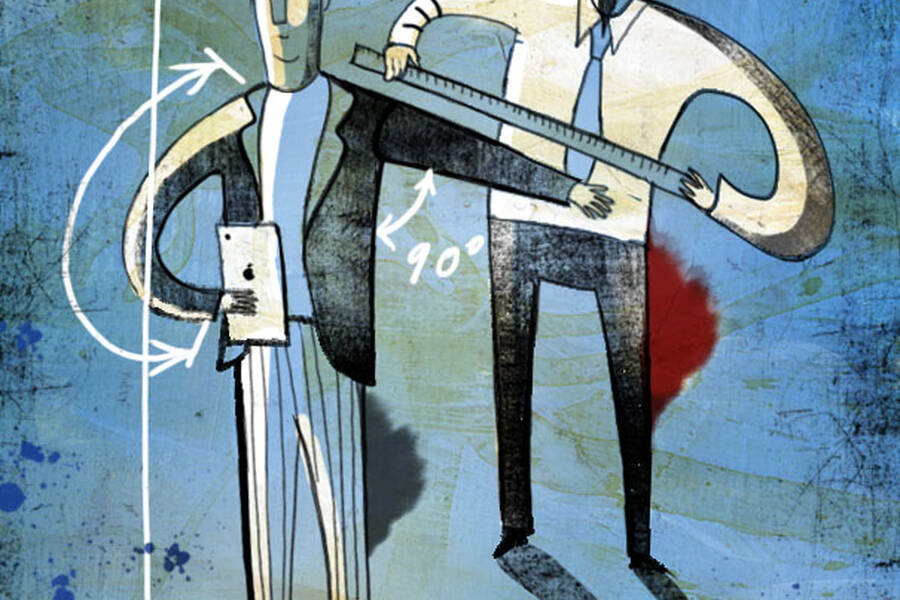Marketing Social Impact Aug 3, 2015
Philip Kotler on Marketing’s Higher Purpose
How social marketing can be a force for good.

Yevgenia Nayberg
From “shared value” to “brand purpose” to “social responsibility,” the business world has no shortage of concepts, guidelines, and frameworks for how to prosper while doing good. Companies today are quick to promote their own uniquely benevolent vision.
But for Philip Kotler, professor of marketing at the Kellogg School since 1962, making a difference in customers’ lives is not a new proposition. In fact, this is the primary goal of marketing, a field he helped to shape—and one that still has a critical role to play in changing our world for the better. In his new book, Confronting Capitalism: Real Solutions for a Troubled Economic System, Kotler advocates bold reform on issues ranging from minimum wage to environmental regulation. But he cautions against an overreliance on public policy expertise—the notion that all of our social problems require government intervention—and insists that marketing can help corporations make a positive impact on their customers and the world at large.
“Marketing and credit are the twin engines of capitalism,” he says. “Marketing convinces people to spend—so that demand is linked to supply—and credit allows them to borrow if necessary.” Today, with rising inequality, too many people are forced to borrow to meet their basic needs. This will change, he says, when workers are given enough pay to afford the goods that businesses produce. But marketing has a role to play, too. “Along with higher pay for workers, marketing with a higher purpose will also improve demand.”
From Tools to Purpose
As Kotler sees it, marketing is not just advertising writ large. Since the publication of Marketing Management in 1967 (now in its 15th edition), he has been at the forefront of the field’s evolution from providing a set of tools (including the famous four P’s and the concepts of segmentation, targeting, and positioning) to addressing deeper questions about customer goals and aspirations. He was one of the first to argue that companies should be customer-centered.
“Marketing has always been about understanding how customers behave, what they feel, and what they hope to achieve,” he says. The field has evolved from what Kotler calls Marketing 1.0, a simple appeal to homo economicus to show that a company’s brand functionally offered the best value for that market segment, through Marketing 2.0’s deeper understanding of the role that emotions play in customer decision making, to Marketing 3.0, which touches a customer’s higher nature and aspirations for community and compassion.
“Marketers are the original behavioral economists.”
In Confronting Capitalism, Kotler makes a case for this more enlightened form of marketing. He advocates a “customer-centric sustainability approach” to marketing—one that addresses customer needs but does not encourage overconsumption or environmental damage—and he urges companies to always consider the triple bottom line. “Have we arrived at an offer that is good for our profits, good for people, and good for our planet?”
It is a case Kotler has been making since 1971, when he and a colleague, Gerald Zaltman, took up a question first raised by G.D. Wiebe: “Why can’t you sell brotherhood like you can sell soap?” The term “social marketing” was born.
“How do we help people to eat better, exercise more, quit smoking, say no to hard drugs? These are the sorts of questions social marketing tried to answer.” Kotler—with coauthor Nancy Lee—developed this novel concept in Social Marketing: Changing Behaviors for Good, which describes how marketing techniques could be used to improve health, safety, education, and community building. “When you think about Bill and Melinda Gates’s work in Africa to eradicate polio and malaria, they are using the principles of social marketing to sell new and better behaviors to citizens in African countries,” Kotler says.
But the concept was eventually overshadowed by the rise of behavioral economics—a cross-pollination of psychology and economics that soon became the darling of the public policy sphere. Today, we talk about government policies “nudging” us towards better health, greener consumption, and cozier retirements, taking our cue from Richard Thaler’s seminal book, Nudge.
“The book made the point that much of consumer behavior is irrational rather than deliberate and thoughtful,” Kotler says. “But marketers have known this for over 100 years. So behavioral economics is nothing new. It is just another word for marketing.”
Marketers start by trying to understand the rational and irrational behavior of customers. Then they determine which features a product should have, how to make it broadly appealing, and how that product can contribute to improving the material, emotional, and spiritual well-being of customers. “In this sense, marketers are the original behavioral economists.”
Social Marketing and Demarketing
As Kotler sees it, the great promise of social marketing is that it addresses social problems without encroaching on individual liberties. While it is true that public policy is an effective way to address such problems, Kotler thinks that corporations themselves should be the ones to encourage better behavior.
Take, for example, Michael Bloomberg’s attempts to improve the health of New Yorkers by reducing the size of soda cups and the visibility of cigarettes. Or consider the challenge of convincing people to use less water in California. Instead of the government explicitly outlawing certain behaviors, or even “nudging” them, social marketers could use Kotler’s 4P framework (product, price, place, promotion) to promote healthier or more sustainable alternatives. Social marketers could even engage in “demarketing,” a strategy Kotler pioneered along with longtime colleague Sidney Levy. The idea is that the same marketing tools that are used to promote consumption can also be used to discourage consumption for the sake of improving health outcomes or protecting the environment.
Many companies have already built sustainability into their thinking and planning. The outdoor clothing company Patagonia has endorsed sustainability by using recycled material and offering its customers free repairs on any clothing item. Kotler points to companies like Unilever—which internalizes the cost of carbon emissions and reflects that cost in its prices—and Timberland—which only uses suppliers who themselves are committed to sustainable business practice—as exemplars of a growing trend.
For Kotler, these companies are going beyond mere corporate social responsibility. CSR usually involves maximizing profits and incidentally doing good for society. Social marketing and sustainable marketing, by contrast, require doing good in the very course of running the business. “I believe that companies should design their entire business model by thinking of what is good for their customers, employees, suppliers, distributors, and society as a whole.”
Better Marketers, Smarter Consumers
Kotler is optimistic about the prospect that better marketing might help solve our social problems. With information about corporate behavior more accessible than ever before, customers are no longer passive agents in the marketing process. Increasingly, they have a role in driving corporate social change. “The ability to rank and rate companies and their brands is incredible now with the Internet,” Kotler says.
To take advantage of this shift toward customer empowerment, Kotler proposes implementing a Good Company Index that would force companies to take seriously a new set of competitive factors.
In this Index, “we would assume that a company is good if it practices sustainability, pays a fair wage, and the CEO doesn’t get 800 times what the average worker gets,” Kotler says. “That way, when consumers are deciding between two similar competing offers, they can choose to buy from the company that ranks higher on being good. The market shares of good companies would grow faster, creating a virtuous cycle. Over time, more companies would have to practice sustainability, pay a fair wage, and not overpay management if it wants its brands to be preferred. As Henry Ford recognized, if wage earners don’t share in growth, they will not be able to buy the goods and services that the business world produces.”
In this scenario, marketing would become what it was supposed to be: an engine for competitive growth by making life better for more people. In Confronting Capitalism, Kotler insists that marketing has the potential to drive the kind of growth that improves people’s lives without creating excessive inequality or damaging the planet. “Marketing with a higher purpose will improve our economy and society.”
Order Philip Kotler’s new book Confronting Capitalism today.



